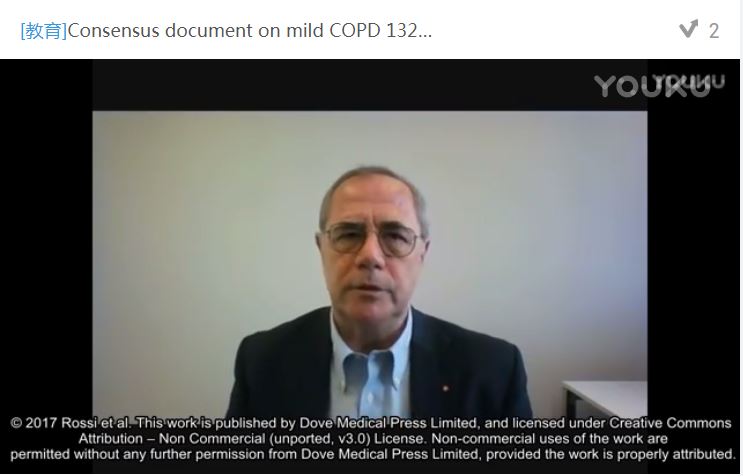9 0 6 7 6
论文已发表
注册即可获取德孚的最新动态
IF 收录期刊
- 2.6 Breast Cancer (Dove Med Press)
- 3.9 Clin Epidemiol
- 3.3 Cancer Manag Res
- 3.9 Infect Drug Resist
- 3.6 Clin Interv Aging
- 4.8 Drug Des Dev Ther
- 2.8 Int J Chronic Obstr
- 8.0 Int J Nanomed
- 2.3 Int J Women's Health
- 3.2 Neuropsych Dis Treat
- 4.0 OncoTargets Ther
- 2.2 Patient Prefer Adher
- 2.8 Ther Clin Risk Manag
- 2.7 J Pain Res
- 3.3 Diabet Metab Synd Ob
- 4.3 Psychol Res Behav Ma
- 3.4 Nat Sci Sleep
- 1.9 Pharmgenomics Pers Med
- 3.5 Risk Manag Healthc Policy
- 4.5 J Inflamm Res
- 2.3 Int J Gen Med
- 4.1 J Hepatocell Carcinoma
- 3.2 J Asthma Allergy
- 2.3 Clin Cosmet Investig Dermatol
- 3.3 J Multidiscip Healthc

Chronic obstructive pulmonary disease with mild airflow limitation: current knowledge and proposal for future research – a consensus document from six scientific societies
Authors Rossi A, Butorac-Petanjek B, Chilosi M, Cosío BG, Flezar M, Koulouris N, Marin J, Miculinic N, Polese G, Samaržija M, Skrgat S, Vassilakopoulos T, Vukić-Dugac A, Zakynthinos S, Miravitlles M
Received 12 January 2017
Accepted for publication 1 May 2017
Published 29 August 2017 Volume 2017:12 Pages 2593—2610
DOI https://doi.org/10.2147/COPD.S132236
Checked for plagiarism Yes
Review by Single-blind
Peer reviewers approved by Dr Charles Downs
Peer reviewer comments 4
Editor who approved publication: Dr Richard Russell
Abstract: Chronic obstructive pulmonary disease (COPD) is a leading cause of
mortality and morbidity worldwide, with high and growing prevalence. Its
underdiagnosis and hence undertreatment is a general feature across all
countries. This is particularly true for the mild or early stages of the
disease, when symptoms do not yet interfere with daily living activities and
both patients and doctors are likely to underestimate the presence of the
disease. A diagnosis of COPD requires spirometry in subjects with a history of
exposure to known risk factors and symptoms. Postbronchodilator forced
expiratory volume in 1 second (FEV1)/forced vital
capacity <0.7 or less than the lower limit of normal confirms the presence
of airflow limitation, the severity of which can be measured by FEV1% predicted: stage 1 defines COPD with mild airflow
limitation, which means postbronchodilator FEV1 ≥80% predicted.
In recent years, an elegant series of studies has shown that “exclusive
reliance on spirometry, in patients with mild airflow limitation, may result in
underestimation of clinically important physiologic impairment”. In fact,
exercise tolerance, diffusing capacity, and gas exchange can be impaired in
subjects at a mild stage of airflow limitation. Furthermore, growing evidence
indicates that smokers without overt abnormal spirometry have respiratory
symptoms and undergo therapy. This is an essential issue in COPD. In fact, on
one hand, airflow limitation, even mild, can unduly limit the patient’s
physical activity, with deleterious consequences on quality of life and even
survival; on the other hand, particularly in younger subjects, mild airflow
limitation might coincide with the early stage of the disease. Therefore, we
thought that it was worthwhile to analyze further and discuss this stage of
“mild COPD”. To this end, representatives of scientific societies from five
European countries have met and developed this document to stimulate the
attention of the scientific community on COPD with “mild” airflow limitation.
The aim of this document is to highlight some key features of this important
concept and help the practicing physician to understand better what is behind
“mild” COPD. Future research should address two major issues: first, whether
mild airflow limitation represents an early stage of COPD and what the
mechanisms underlying the evolution to more severe stages of the disease are;
and second, not far removed from the first, whether regular treatment should be
considered for COPD patients with mild airflow limitation, either to prevent
progression of the disease or to encourage and improve physical activity or
both.
Keywords: chronic
obstructive pulmonary disease, COPD, airflow limitation, COPD staging, GOLD
document, COPD pathophysiology
摘要视频链接:Consensus document on mild
COPD
